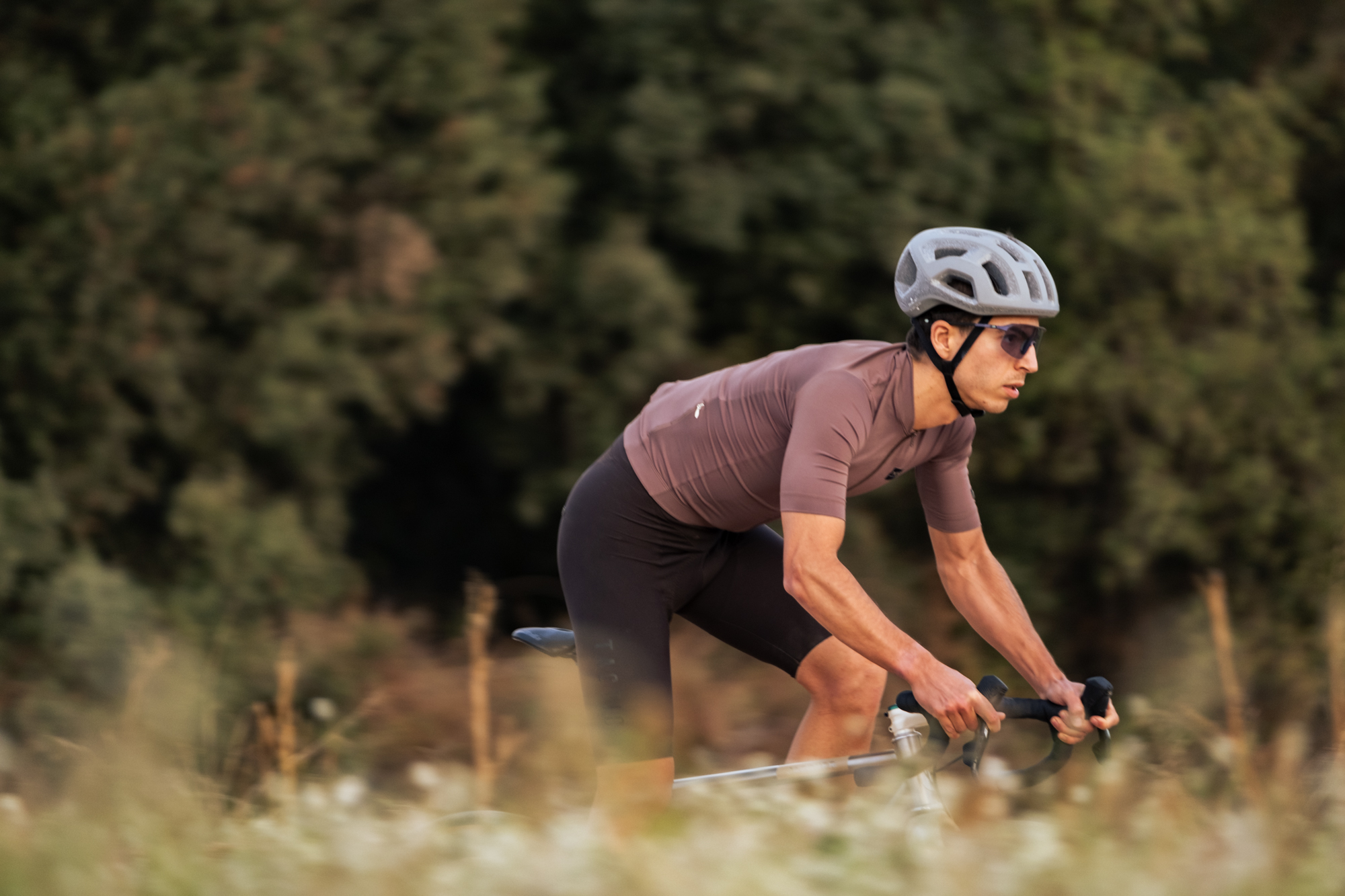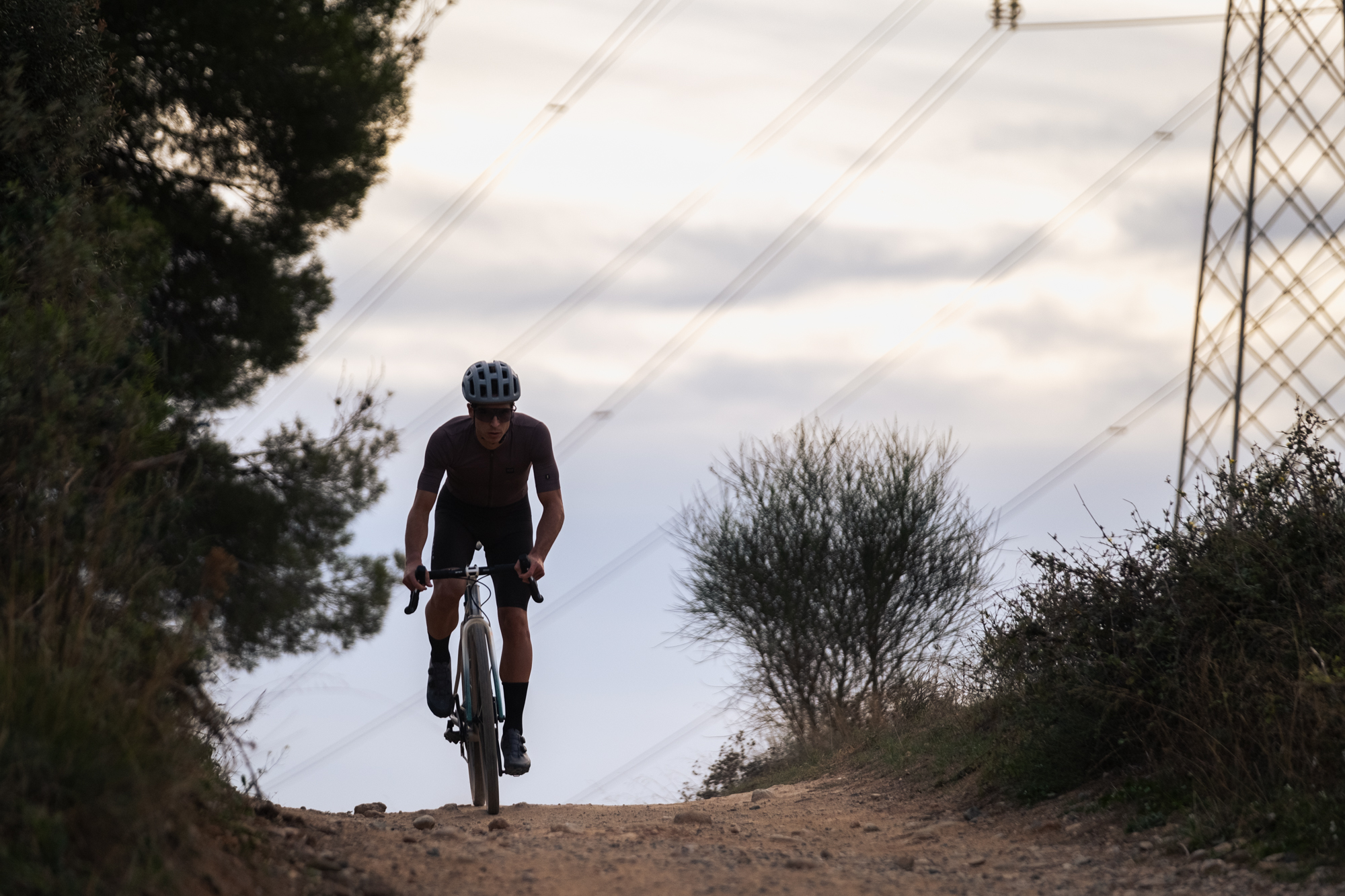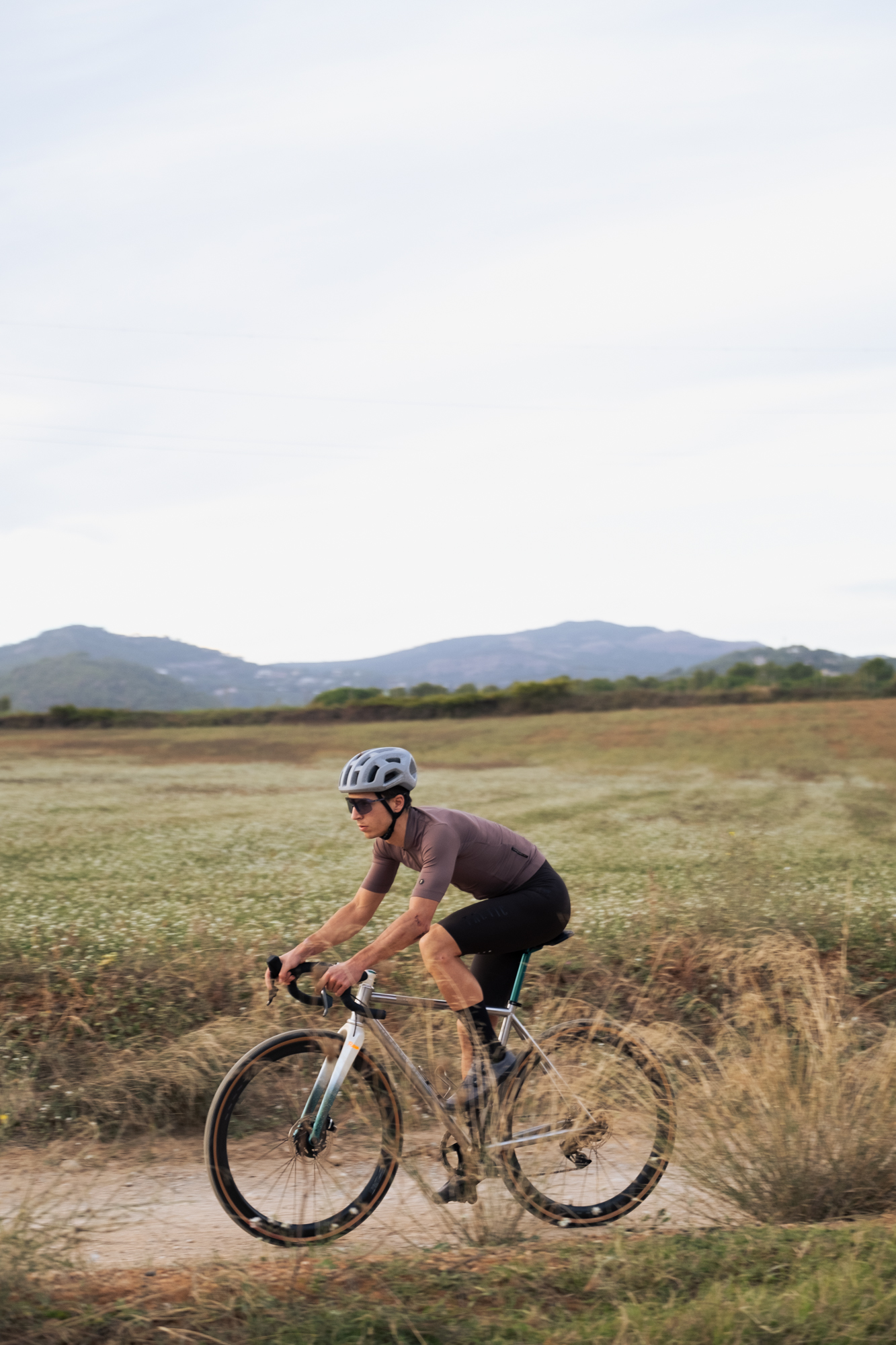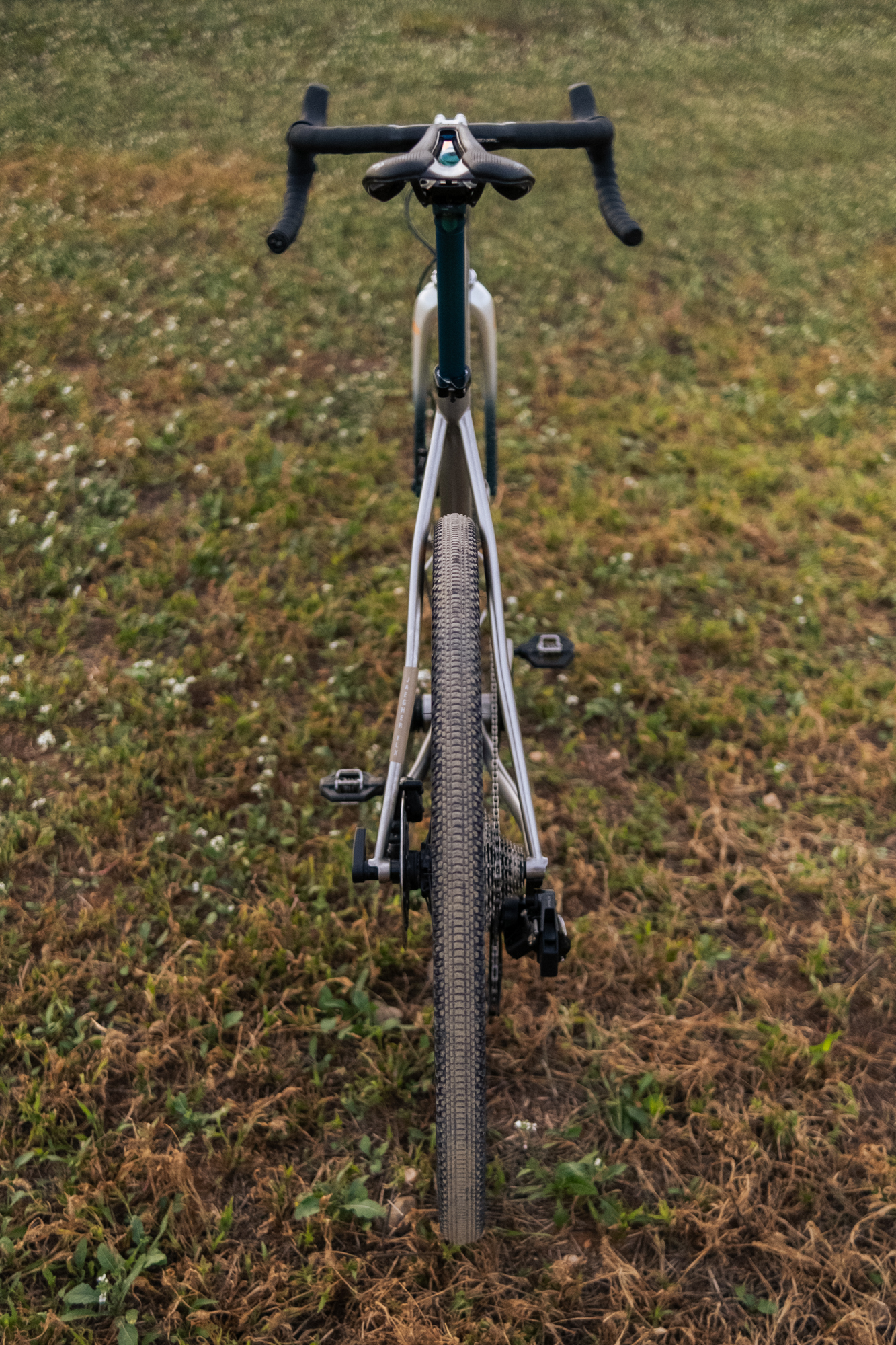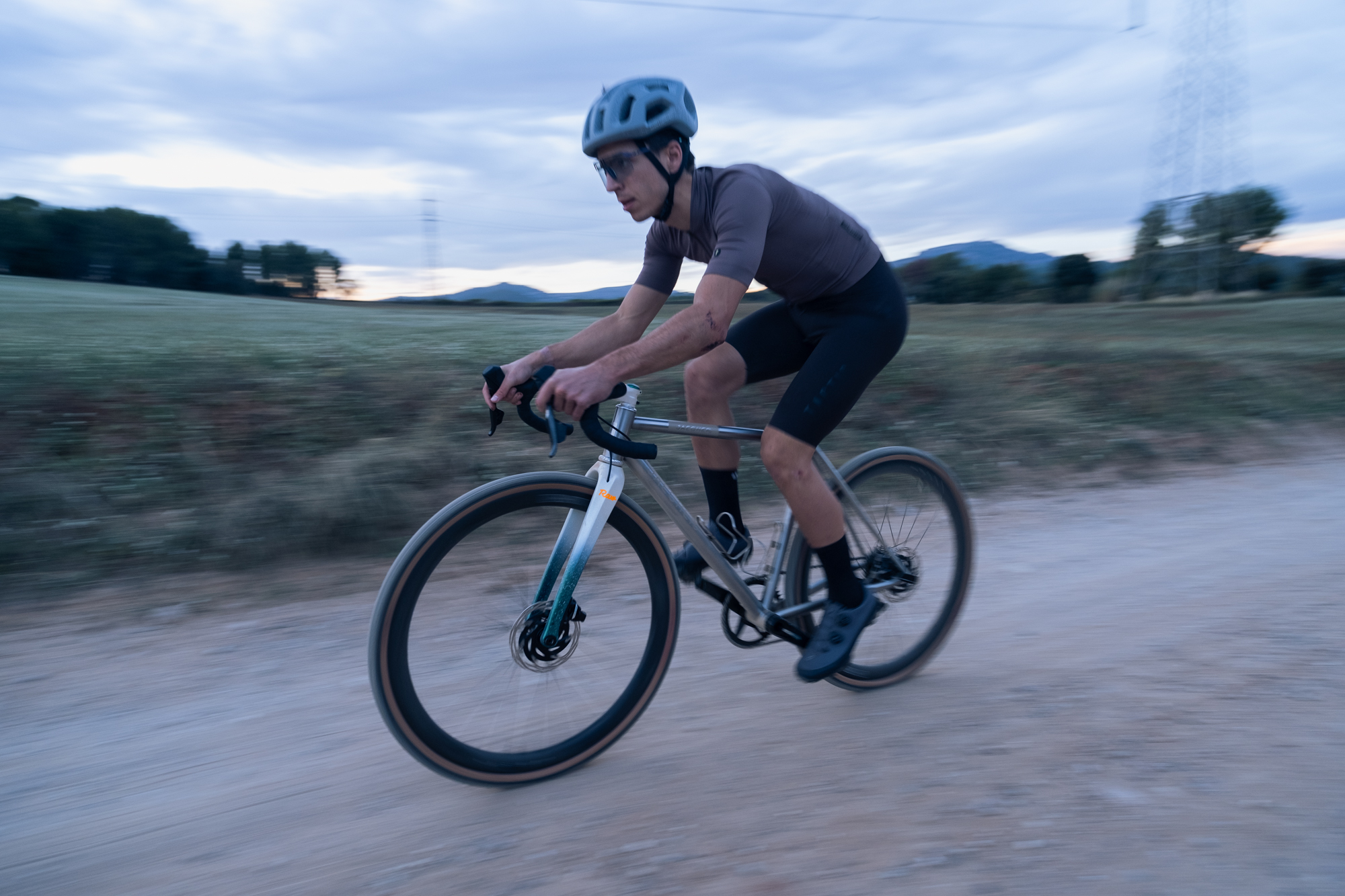Here in the northern hemisphere, we are heading to winter, and it is understandably more difficult to find the motivation to go out and ride. The grim weather conditions and scarce hours of daylight turn indoor cycling into the most logical way of spinning the legs, unless something persuades us enough to ride outside no matter what’s on the other side of the front door.
This is where a new bike comes into play. In collaboration with Jaegher, our editor Javi recently got his hands on his first gravel bike, a Jaegher Hurricane FL.X 1912 which he has been putting to the test since day one with future adventures and challenges in mind.
Naming bikes after fighter jets
Jaegher was founded in 1934 in Flanders, Belgium. The brand name means hunter, and its pronunciation is the same as Yeager, “a reference we like to make to the first man to break the sound barrier in a jet plane”, as they state. Each of the models they produce is also related to the plane’s topic, as all products are named after famous jets. Particularly, Hurricane refers to the Hawker Hurricane, a British fighter aircraft of the 1930s–40s.

If we focus again on their products, the base material of their bikes is Columbus XCr stainless steel tubes coming from Italy, which are then welded in their atelier in Ghent. The paint job, finish, and assembly are also done in Flanders. They recently opened a showroom, also in Ghent, and there is a new atelier being built, four times bigger than the current one.
“Your race cycle doesn’t arrive here together with thousands of other mass-production race cycles in a container from the other side of the world. It is made over here. No other brand is more Belgian or Flemish than Jaegher.”
Nothing beats a custom frameset
One of the many advantages of made-to-measure bikes is that they can accommodate all the physiological particularities and geometry preferences of the rider. We ended up with a geometry that feels aggressive at first glance but nonetheless is clearly off-road oriented.

The fork has a tire clearance of up to 700c x 47 mm so we can tackle crazy adventures with this bike too. Trying to find the balance between racing and bikepacking, this frame has additional bolts on the downtube but none on the fork or top tube.
Regarding the cable routing, we won’t deny that a fully integrated build looks very clean, but we are also aware of the struggles to disassemble an integrated cockpit and we chose a semi-integrated approach instead. There are many trips planned with this bike over the next year, and we like the ease of disassembling a semi-integrated cockpit.
Stainless steel
Steel bikes are cool, but stainless steel bikes are the real deal. Emanuel from Jaegher told us about the benefits of this alloy and, knowing that it would fit with our riding style, we went for it. This model is called Hurricane 1912, and the year refers to when this iron alloy was created for the first time.
Three times stronger than ordinary steel, weatherproof & durable given the resistance of the material to corrosion, and difficult to beat when it comes to finding the best performance-comfort balance. We also want to mention that stainless steel is also more environmentally sustainable and recyclable than carbon.

Paint job with a meaning
Unlike Tom Boonen’s newest bike, which was displayed at Bespoked, we opted for a more subtle, yet beautiful paint job. The frame has a hand-brushed naked finish with CPC (ceramic polymer coated) logos. Given its look, we have already been told several times that it looks like a titanium bike.
Regarding the carbon fork and the stem, though, we were encouraged to do something out of the ordinary, and we are quite satisfied with the result. We wanted the same base color for the frame logos but, given the different paint techniques used, the output was not exactly the same.
A light sand color was used as the base and the faded lizard green with stints gave it the perfect touch. It was done using wet paint and applying a matte finish. The fluorescent orange was used for the logos, both Jaegher and RAW Cycling ones, and the requested drawing on the stem.
“My life motto is ‘tunnel vision’ and, every time I look at my stem, I am reminded about focusing on my own goals and forgetting about external inputs.” – Javi
Persuaded by the Classified hype
In addition to the frame material, geometry, and paint job, we also had complete freedom of choice when it came to components. The drivetrain is a SRAM Force AXS XPLR 1x, but we included the Classified Powershift system to be able to count on a second front ring. Ah, you don’t know yet what Classified is about? The Belgian company is taking the cycling industry by storm with the innovative way in which they combine the benefits of both 1x and 2x drivetrains through a sleek, wireless system that eliminates the front derailleur.
With a button located in the left hood, one can shift from the big ring to the virtual small one, which has a ratio of 0,686. This means that for each revolution on the cassette, the wheel rotates 0,686 revolutions. This ratio is comparable to 53/36, 50/34 or 48/33 combinations.
After a month of testing it, we can say that its ability to shift instantly and under pressure is a game changer. During the rides we have done so far we have encountered on numerous occasions steep hills just after a blind turn, and shifting from the big to the virtual small ring prevented us from putting a foot on the ground. The gear range is also a big advantage, and during these first weeks we have been riding with a 46T and an 11-34 cassette, for a total of 24 gears.
The icing on the cake
Incorporating the Powershift system also implies getting the necessary set of wheels. These HUNT 40 Carbon Gravel Race rims are hookless and 40 mm deep. Unlike the loud free hubs of the rest of the wheelsets of the British brand, this one is silent, which is a pity.
Another Belgian brand present in this build is Cyclowax. We already incorporated their hot waxing system in the chain lubing routine of our previous bikes, and on this occasion, we count on a pre-waxed chain out-of-the-box.
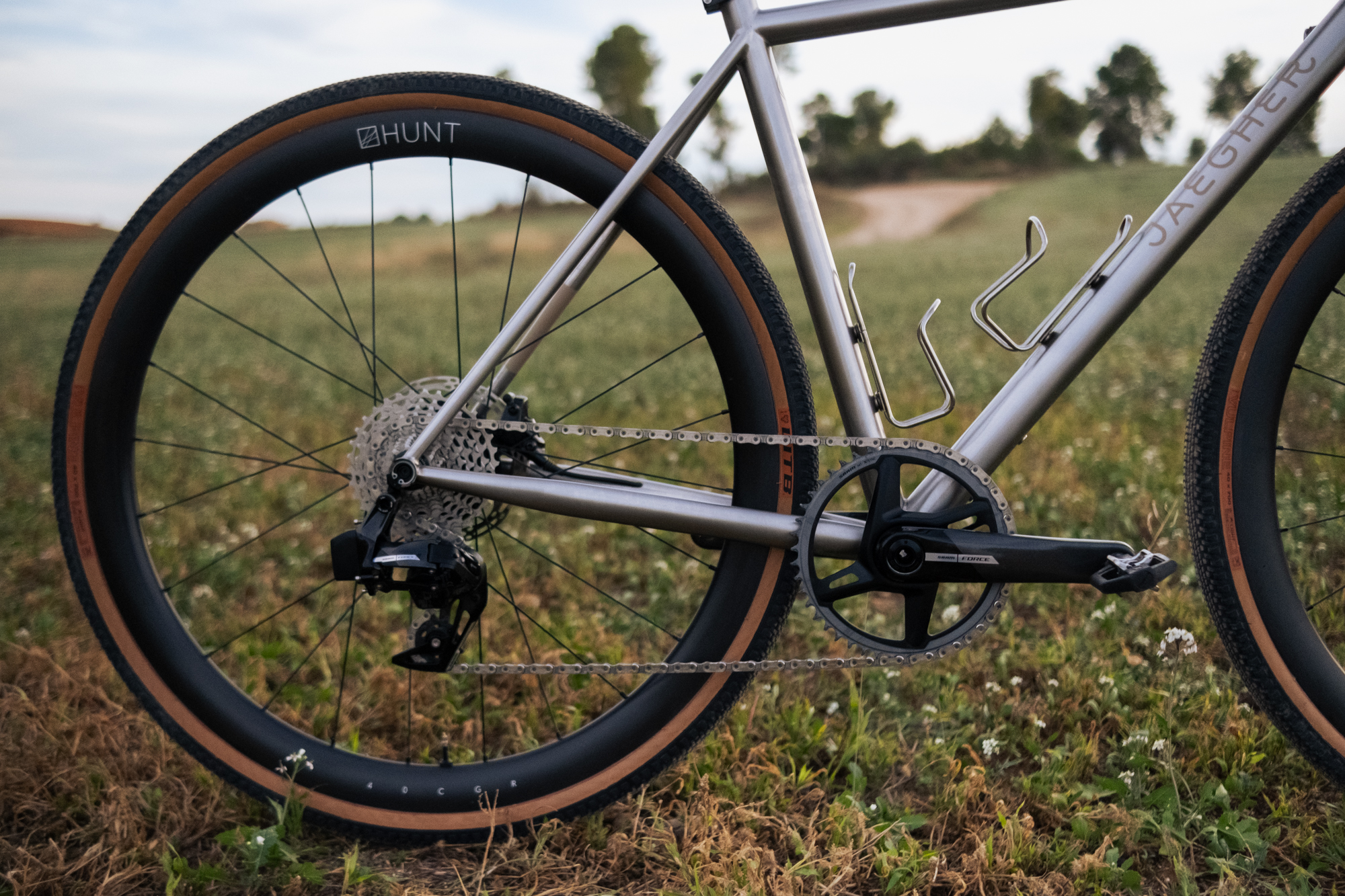
The Chris King headset and King cages are a must if you have the option to choose the components of your bike. The bottom bracket is a Cema stainless steel T47, and the products that are part of the Zipp Service Course SL/XPLR pack complement the rest of the bike.
Ride feeling
The good thing about getting a new bike in autumn is that there are several months ahead in which we can test different setups with the summer adventures in mind. This bike has already gone through a lot. After a couple of rides in Flanders we brought this Jaegher Hurricane FL.X to Girona to take part in GiRodeo, and we can say it turned heads among the participants.
So far it passes with flying marks all the tests done in dusty, muddy, and rocky conditions. One can feel that it is made to measure, and it behaves like an extension of our own body. It feels light when climbing, it is definitely responsive when descending, and the chosen geometry allows us to adopt an aggressive position on the flat sections.
We have been fortunate enough to test many gravel bikes over the years and, whether because of the fact that we finally have our own, or because the stiffness of the material encourages us to, we were more daring and aggressive on the descents, with the bike responding amazingly.

No complaints about the frame, but it is true that the width of the WTB Vulpine tires (40 mm) was probably not enough for some of the descents we faced in Girona, so in the short term we will make the most of the tire clearance by mounting wider tires.
Beyond performance, we fell in love with the sound of the small stones hitting the stainless steel, which may even sound masochistic. The fluorescent flashes of the bright orange details, when the sunlight starts to fade away, give a perfect aesthetic touch to the entire build. Javi finally owns a gravel bike, and what a bike to start with.



